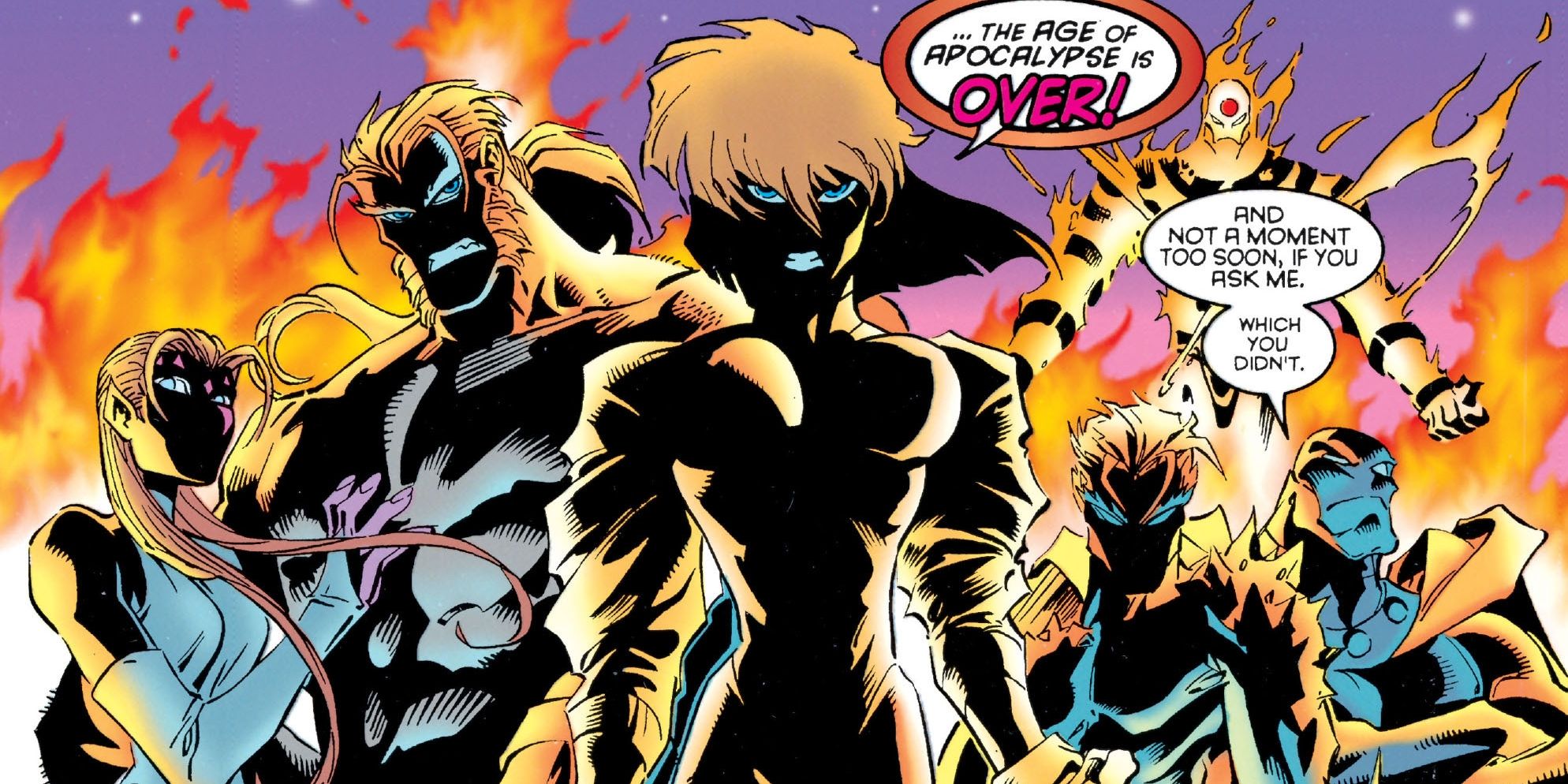
All throughout the ‘90s, the many titles of X-Men rolled out one massive mutant crossover event after another, until they sometimes blur together, but perhaps none stuck out and managed to recapture the imagination of the franchise as much as the vaunted 1995 event, Age of Apocalypse. Set in a completely messed-up reality in which Professor X was accidently murdered by his reality-warping son Legion, all eight of the contemporary X-books were radically shaken up and replaced for four months with their alternate universe counterparts. "Age of Apocalypse" has since been hailed as a highlight of the ‘90s comic aesthetic, and gone on the inspire videogames and television programming. But what made the series so memorable?
Well, there’s a few things. Focusing on two series in particular, Astonishing X-Men and Amazing X-Men (having replaced the two core X-books respectively), there are many positive attributes in both the presentation and writing that serve to heighten the bolster the legacy of the work, especially when meta-textually compared to the original stories. Now, the arcs are not perfect, and the art sometimes suffers from the 90s-style jumbled and overly-cluttered panel-layout trend, rife with word balloons and description boxes that get in the way of the art. But for what Scott Lobdell and Fabian Nicieza set out to achieve, it’s ultimately a triumph of their sometimes cheesy storytelling style.
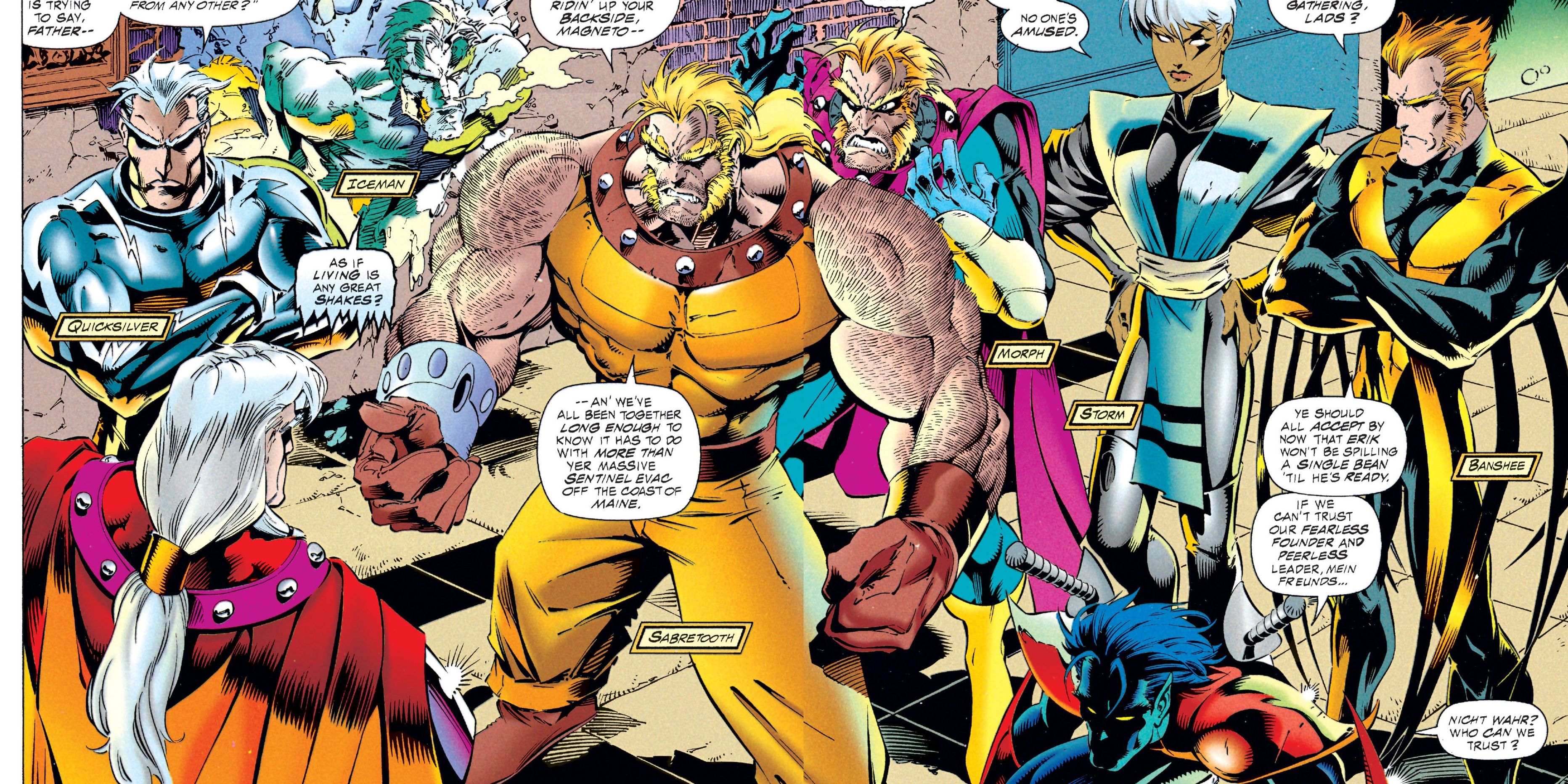
First, as context, "Age of Apocalypse" completely replaced the established continuity for four months, following the conclusion of the story-arc “Legion Quest” in which Xavier’s son David Haller uses his powers to travel back in time in order to kill Magneto and ends up offing his own dad (and himself, because that’s how time travel works… maybe). This leads to a butterfly effect in which the history of the Marvel universe unfolds in a completely different, and much darker way, leading to a present-day equivalent in which Apocalypse has conquered America and is preparing a final strike which will wipe out all human beings from existence. And all that stands in his way are a different band of X-Men, now led by a Magneto who never became a supervillain, but instead followed the dream of his long dead friend of peace.
The story picks up when the time-displaced X-Men Bishop, having spent the last twenty-five years wandering around aimlessly, is picked up by Mag’s X-Men, and through Rogue (now Magneto’s wife), is able to communicate the dire circumstances of reality’s mutilation. Now on the eve of a true apocalypse, Magneto devises a plan to send Bishop back to the past in order to fix reality, sending his X-Men out on missions to save the remnants of humanity trapped in Apocalypse’s America.
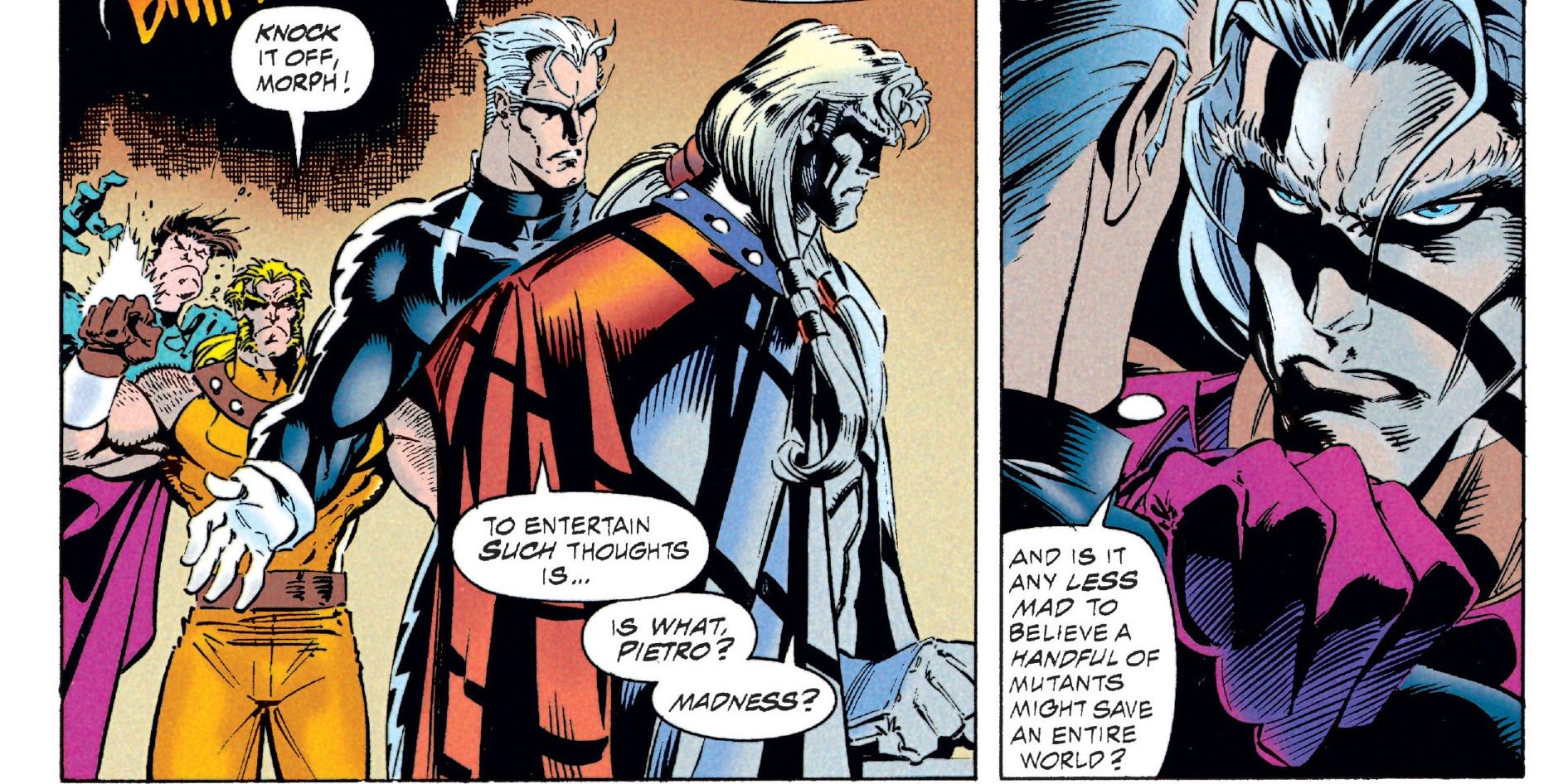
A romance between Rogue and Magneto had been hinted at in past Uncanny X-Men issues, but here serves as a main dramatic thrust, as the two are married after Magneto reveals he can use his powers to blunt her famous draining touch. Their child, Charles Lensherr, is a fitting testament to the bleakness of their quest, for, even should they succeed in their impossible mission to restore reality, his life is forfeit as he will have never existed. Nevertheless, Magento is depicted as a dutiful and caring father for his young child, and it is perhaps this relationship that serves as the core of the entire crossover story.
Unlike the X-Men titles of the day, AoA takes a much more of a dystopian bent, imbuing a dark-fantasy/sci-fi tone that serves the setting of a ragtag band of mutant heroes exceedingly well. It’s not an easy task to accomplish, but somehow Lobdell and Nicieza manage to make the world of AoA feel like a lived-in place with a backstory. Partly this is due to how desperate and exhausted the characters are often portrayed, most notably in the pages of Amazing X-Men, written by Nicieza.
Being an alternate reality, some of the best storytelling quirks of the arc are the meta-textual commentaries being made when the characters are placed next to their normal timeline counterparts. In Astonishing X-Men, Rogue, then normally portrayed as a simultaneously impulsive, yet often shyly reluctant heroine, is now second-in-command of the group, cautious yet confident and dedicated to her fellow freedom fighters. Sabretooth, now an almost unrecognizable version of himself, is an honorable and reliable soldier of Magneto, his battle-lust now completely in check.
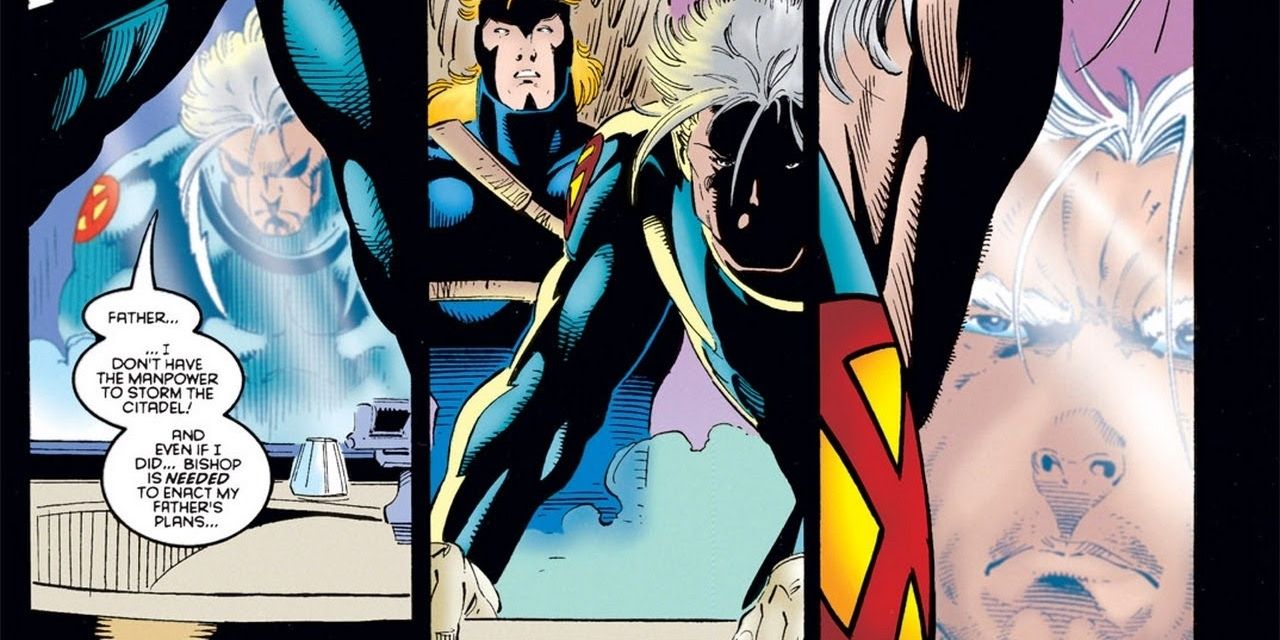
Perhaps the best example of this is in the character Blink, a shy young mutant with teleportation powers who had then-recently been introduced only to be killed off almost immediately in the main timeline. Here, Blink is a brave and stalwart heroine who overcomes her fears of the bleak dystopia to become one of its greatest warriors. In the absence of a sane and stable world, this one-off character was now given a chance to shine, and symbolizes perhaps everything that makes the X-Men an interesting and compelling concept.
The art style also helped. Drawn by Joe Madureira, Astonishing X-Men’s somewhat dark fantasy-leaning tone was bolstered by Madureira’s exaggerated, perhaps hyper-sexualized (as was the '90s aesthetic) but ultimately cartoonish style. While this often did not transfer over well into more traditional X-Men stories, it serves the high-fantasy conceit well and the AoA particularly well in this regard. Madureira’s talent in producing flowing action sequences, combined with Lobdell’s serious, yet levity-strewn approach, make the book a classic read now.
Because, while Lobdell does posit quite a few disturbing philosophical points in the story, including Magneto's son’s impending non-existence, Sunfire’s horrific memories of being nearly drowned in the blood of his countrymen in Japan, and Magneto questioning whether the non-lethal superhero Bishop would be able to kill Legion should their time travel idea work, he also includes many lighter elements in balance. The goofball Morph comes to mind, constantly using his powers to prank or amuse his companions, a character long dead in the original continuity. Then there's the softness of the big brotherly relationship between Sabretooth and Blink, so much like Wolverine in the usual world, but so different. True, these relationships don’t have thousands of pages of continuity backing them up, but the reader can feel the history of the world thanks to how simply yet effectively the characters are written.
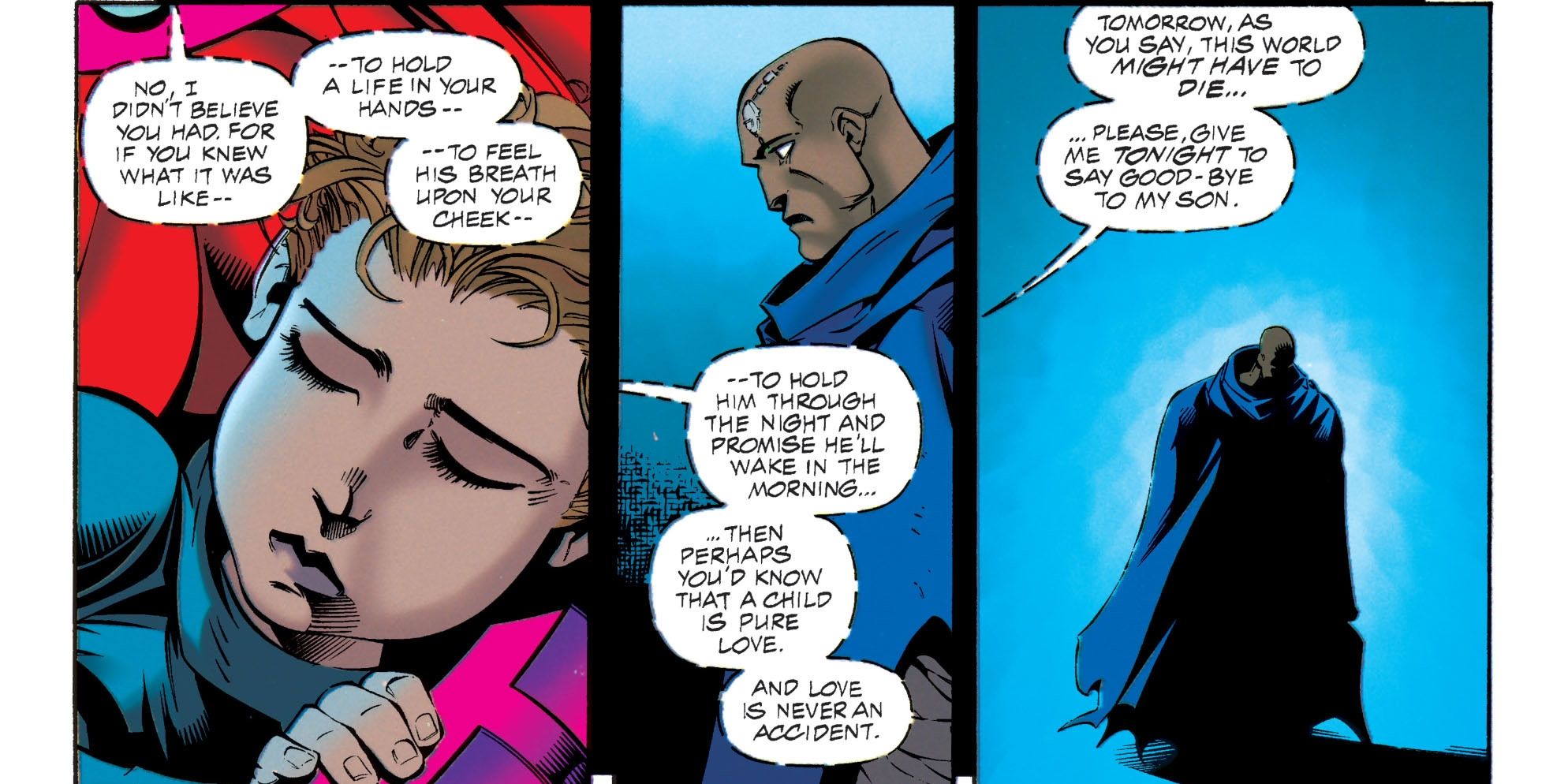
In many ways, AoA can be seen as a response to the status quo X-Men stories of the time, which often involved convoluted time-travelling characters, usually portrayed as the descendants of established characters coming back in time to exact revenge on their ancestors or possibly assist them somehow, like Rachel Summers, Cable and Stryfe. Here, these mechanics were used instead to clear to drawing board and allow new stories with new aspects of both popular and underrated characters to be told.
What makes Age of Apocalypse such a successful experiment in alternate reality superhero storytelling much like its spiritual predecessor “Days of Future Past” is that it took advantage of dystopian fantasy setting to tell simple yet effective, character-driven stories. And perhaps its greatest strength was in the focus on what certain underused characters, like the arrogant Quicksilver or the murderous Sabretooth, could’ve been if the world were different. And so it remains an interesting re-imagining of what the X-Men might’ve been as twilight heroes under the Age of Apocalypse.
from ScreenRant - Feed https://ift.tt/2zn5oIV


0 Comments